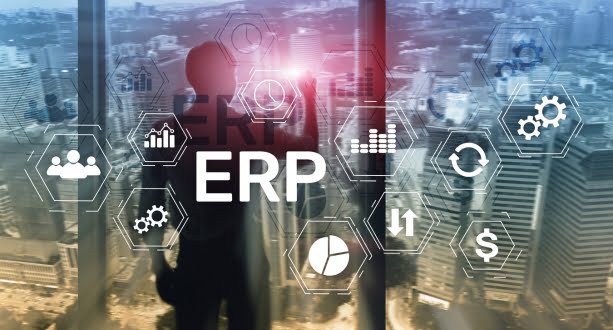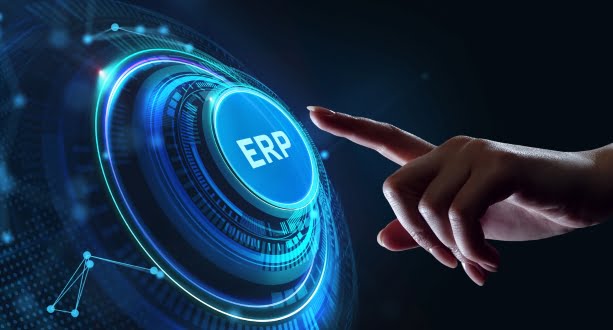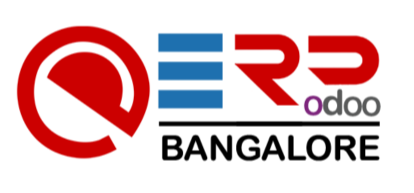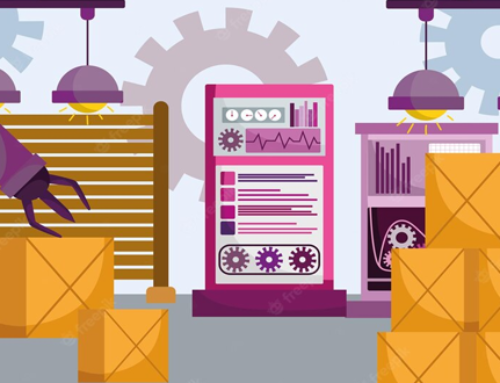Introduction
-
What is an ERP System?

An ERP system refers to a suite of integrated applications that facilitate the management of an organization’s core business processes in real-time. These processes encompass various functions such as finance, human resources, supply chain management, manufacturing, and customer relationship management. Essentially, ERP systems serve as a centralized hub where data from different departments are collected, stored, and analyzed, providing stakeholders with a holistic view of the organization’s operations.
Evolution of ERP Systems

The concept of ERP systems originated in the 1960s with the development of Material Requirements Planning (MRP) systems, which focused primarily on inventory management and production scheduling. As technology advanced, MRP systems evolved into Manufacturing Resource Planning systems in the 1980s, incorporating additional functionalities such as capacity planning, procurement, and workforce management.
The 1990s witnessed the emergence of ERP systems in their modern form, with companies like SAP, Oracle, and JD Edwards pioneering the integration of various business processes into comprehensive software suites. These systems offered a unified platform that enabled seamless communication and collaboration across different departments, laying the foundation for the digital transformation of businesses worldwide.
Core Components of an ERP System
An ERP system typically comprises several core components, each designed to address specific business functions and processes:
- Financial Management: This module handles financial transactions, budgeting, accounting, and reporting, providing organizations with insights into their financial performance and compliance with regulatory standards.
- Human Resource Management: The HR module automates tasks related to employee recruitment, payroll, benefits administration, training, and performance evaluation, fostering a more efficient and transparent workforce management process.
- Supply Chain Management: This component optimizes the procurement, production, and distribution of goods and services, helping organizations minimize costs, improve delivery times, and enhance overall supply chain efficiency.
- Manufacturing: The manufacturing module streamlines production processes, including inventory management, resource allocation, scheduling, and quality control, enabling organizations to maximize productivity and minimize waste.
- Customer Relationship Management: CRM functionality enables businesses to manage customer interactions, track sales leads, automate marketing campaigns, and analyze customer data to enhance customer satisfaction and loyalty.
Types of ERP Systems

ERP systems come in various forms, catering to different industries, organizational sizes, and functional requirements. Some of the common types of ERP systems include:
- On-Premises ERP: Traditional on-premises ERP systems involve installing the software on the company’s own servers and infrastructure, giving organizations full control over customization, data security, and maintenance. While this approach offers greater flexibility and customization options, it often requires significant upfront investment and ongoing IT support.
- Cloud-based ERP: Cloud-based ERP systems, also known as Software-as-a-Service (SaaS) ERP, are hosted on remote servers and accessed via the internet. This model offers scalability, flexibility, and cost-effectiveness, as companies can pay for only the resources they use on a subscription basis. Cloud ERP also eliminates the need for extensive hardware infrastructure and allows for easier remote access and collaboration.
- Industry-Specific ERP: Some ERP vendors offer industry-specific solutions tailored to the unique requirements of particular sectors such as manufacturing, healthcare, retail, or hospitality. These specialized ERP systems often include pre-configured modules and best practices specific to the industry, enabling faster implementation and smoother adoption.
- Open-Source ERP: Open-source ERP systems provide source code access to users, allowing them to customize and modify the software according to their specific needs. While open-source ERP offers flexibility and cost savings in terms of licensing fees, it may require greater technical expertise and resources for customization, maintenance, and support.
ERP systems play a pivotal role in modernizing and optimizing business operations across diverse industries. By integrating core business processes into a unified platform, ERP systems enable organizations to enhance efficiency, agility, and decision-making capabilities, ultimately driving sustainable growth and competitive advantage in today’s dynamic marketplace.
The Role of ERP in Accounting
-
Streamlining Financial Processes:
ERP systems automate and standardize various accounting processes such as accounts payable, accounts receivable, general ledger, and payroll. By centralizing data and automating repetitive tasks, ERP software reduces manual errors, improves data accuracy, and accelerates the financial closing process. This streamlining enhances overall operational efficiency within the accounting department.
-
Integration of Accounting Modules:
ERP platforms integrate different accounting modules like general ledger, accounts payable, accounts receivable, fixed assets, and cash management. This integration ensures seamless data flow between various financial functions, eliminating data silos and redundant data entry. As a result, stakeholders have access to comprehensive financial information across different modules in real-time.
-
Real-time Reporting and Analytics:
ERP systems provide real-time reporting and analytics capabilities, enabling stakeholders to access up-to-date financial information for informed decision-making. These systems generate customizable financial reports, dashboards, and key performance indicators (KPIs) to monitor business performance, analyze trends, and identify areas for improvement. Real-time insights empower organizations to respond promptly to market changes and make strategic decisions.
-
Compliance and Regulatory Requirements:
ERP solutions incorporate built-in controls and workflows to ensure compliance with various regulatory standards and accounting principles such as Generally Accepted Accounting Principles (GAAP) or International Financial Reporting Standards (IFRS). These systems enforce segregation of duties, maintain audit trails, and facilitate regulatory reporting, thereby reducing the risk of non-compliance and financial penalties.
-
Cost Reduction and Efficiency Gains:
By automating manual tasks, minimizing errors, and optimizing resource utilization, ERP systems contribute to cost reduction and efficiency gains in accounting operations. These systems eliminate the need for redundant software applications, streamline workflows, and enhance productivity, leading to lower operational costs and improved profitability over time.
Key Functionalities of ERP Systems in Accounting
1. General Ledger
At the heart of every accounting system lies the general ledger, serving as the central repository for all financial transactions within an organization. ERP systems revolutionize general ledger management by automating data entry, reconciliation, and reporting processes. By integrating with other modules such as accounts payable, accounts receivable, and asset management, ERP systems ensure real-time visibility into financial data, enabling stakeholders to make informed decisions swiftly. Advanced features like customizable chart of accounts, journal entry management, and multi-currency support empower organizations to adapt to diverse accounting requirements with ease, facilitating compliance and enhancing financial transparency.
2. Accounts Payable
Efficient management of accounts payable is vital for maintaining healthy vendor relationships and optimizing cash flow. ERP systems streamline accounts payable processes by automating invoice processing, approval workflows, and payment scheduling. Through seamless integration with procurement and inventory modules, ERP solutions enable accurate tracking of purchases, receipt of goods, and vendor invoices, eliminating manual errors and reducing processing time. Furthermore, features such as vendor portals, electronic payment capabilities, and automated reconciliation enhance collaboration between finance departments and suppliers, fostering efficiency and driving cost savings.
3. Accounts Receivable
Timely and accurate management of accounts receivable is essential for ensuring steady cash inflows and minimizing bad debt risks. ERP systems empower organizations to streamline accounts receivable processes by automating billing, invoicing, and collection activities. Integration with customer relationship management (CRM) modules enables seamless synchronization of sales orders, contracts, and customer invoices, facilitating accurate revenue recognition and forecasting. Additionally, functionalities such as credit management, aging analysis, and automated reminders empower finance teams to optimize credit policies, reduce overdue payments, and improve cash flow predictability, thereby enhancing overall financial stability.
4. Asset Management
Effectively managing assets throughout their lifecycle is critical for maximizing their value and minimizing operational risks. ERP systems offer comprehensive asset management functionalities, enabling organizations to track, depreciate, and maintain their physical and intangible assets efficiently. Through centralized asset registries, organizations gain real-time visibility into asset details, including acquisition costs, depreciation methods, and maintenance schedules. Integration with procurement and financial modules streamlines asset acquisition processes, while features such as preventive maintenance scheduling, asset tracking, and disposal management ensure regulatory compliance and optimize asset utilization, ultimately driving cost efficiencies and enhancing asset performance.
5. Financial Reporting
Accurate and timely financial reporting is indispensable for meeting regulatory requirements, facilitating informed decision-making, and enhancing stakeholder confidence. ERP systems revolutionize financial reporting by consolidating data from various modules into comprehensive, customizable reports and dashboards. With built-in analytics tools and real-time data access, organizations can generate a wide range of financial reports, including balance sheets, income statements, cash flow statements, and variance analyses, tailored to specific stakeholder needs. Furthermore, features such as drill-down capabilities, ad-hoc reporting, and interactive visualizations empower finance professionals to gain deeper insights into financial performance trends, identify areas for improvement, and drive strategic decision-making across the organization.
ERP systems have emerged as indispensable tools for modern businesses seeking to streamline their accounting processes, enhance financial visibility, and drive strategic growth. By integrating key functionalities such as general ledger management, accounts payable, accounts receivable, asset management, and financial reporting, ERP solutions empower organizations to optimize their financial operations, mitigate risks, and seize new opportunities in an increasingly dynamic business landscape.
Implementing ERP Systems in Accounting
-
Needs Assessment and Goal Setting :
Before implementing an ERP system, it’s crucial to assess the needs of the organization and establish clear goals for the project. This involves understanding the current accounting processes, identifying pain points, and determining what the organization hopes to achieve with the new system. Goals may include streamlining workflows, improving data accuracy, enhancing reporting capabilities, or increasing efficiency.
-
Vendor Selection :
Selecting the right ERP vendor is a critical decision that can significantly impact the success of the implementation. Organizations should evaluate potential vendors based on factors such as system functionality, scalability, customization options, vendor reputation, implementation support, and total cost of ownership. It’s essential to thoroughly research and compare different vendors to find the best fit for the organization’s needs.
-
Data Migration and Integration :
Migrating data from existing systems to the new ERP system is a complex process that requires careful planning and execution. This involves identifying the data to be migrated, cleaning and preparing the data, mapping data fields between systems, and ensuring data integrity throughout the migration process. Integration with other systems such as CRM (Customer Relationship Management) or inventory management systems may also be necessary to ensure seamless data flow across the organization.
-
Training and Change Management :
Training employees on how to use the new ERP system is essential for successful adoption. This involves developing training materials, conducting training sessions, and providing ongoing support to help employees navigate the new system effectively. Change management strategies should also be employed to address any resistance to change and ensure that employees are engaged and motivated throughout the implementation process.
-
Testing and Go-Live :
Before fully deploying the ERP system, thorough testing is necessary to identify and address any issues or bugs. This includes unit testing, integration testing, and user acceptance testing to ensure that the system functions as intended and meets the organization’s requirements. Once testing is complete and any necessary adjustments have been made, the system can be officially launched (go-live). Post-implementation support should be available to address any issues that arise and ensure a smooth transition to the new system.
Challenges and Solutions in ERP Implementation
-
Resistance to Change:
Resistance to change is a common hurdle encountered in any organizational transformation, and ERP implementation is no exception. Employees may be apprehensive about adopting new processes, fearing disruptions to their familiar workflows or concerns about job security.
Solution: Effective Change Management
A comprehensive change management strategy is essential for addressing resistance to change. This includes clear communication about the reasons for implementing ERP, outlining the benefits for both the organization and individual employees. Providing training and support to help employees adapt to new systems and processes can alleviate anxiety and foster a culture of openness to change.
-
Data Security Concerns:
Data security is paramount in today’s digital landscape, and the prospect of migrating sensitive business data to a new ERP system can be daunting. Organizations must ensure that their ERP implementation adheres to strict security protocols to safeguard against data breaches and unauthorized access.
Solution: Robust Security Measures
Implementing robust security measures, such as encryption, access controls, and regular audits, is critical for protecting sensitive data within an ERP system. Partnering with reputable ERP vendors who prioritize security and compliance can provide assurance that data protection standards are met. Additionally, ongoing monitoring and updates are necessary to adapt to evolving security threats.
-
Customization vs. Standardization:
One of the dilemmas faced during ERP implementation is striking the right balance between customization and standardization. While customization allows businesses to tailor the ERP system to their specific needs, excessive customization can lead to complexity, higher costs, and difficulties in system maintenance and upgrades.
Solution: Strategic Customization
A strategic approach to customization involves identifying core business processes that require customization to meet unique requirements while leveraging standard ERP functionality for non-critical processes. Prioritizing customization based on business value and long-term scalability can help minimize complexity and ensure a more streamlined implementation process. Additionally, regular reviews of customization decisions can help prevent over-customization and maintain system agility.
-
Scalability and Flexibility:
Scalability and flexibility are essential considerations for ERP systems, especially for growing organizations or those operating in dynamic environments. The ERP solution must be capable of accommodating changing business needs, whether it’s expanding operations, entering new markets, or adapting to industry disruptions.
Solution: Scalable Architecture and Modular Design
Choosing an ERP system with a scalable architecture and modular design allows organizations to scale resources and functionality as needed without significant disruptions or costly reconfigurations. Cloud-based ERP solutions offer scalability advantages by enabling on-demand resource provisioning and flexible subscription models. Additionally, investing in ERP systems that support open APIs facilitates integration with third-party applications, enhancing flexibility and future-proofing the ERP ecosystem.
-
Integration with Legacy Systems:
Many organizations grapple with the challenge of integrating new ERP systems with existing legacy systems, which may use outdated technologies or lack interoperability. Failure to achieve seamless integration can result in data silos, inefficiencies, and operational bottlenecks.
Solution: Comprehensive Integration Strategy
A comprehensive integration strategy is essential for ensuring smooth interoperability between ERP systems and legacy applications. This involves assessing existing systems and data architecture to identify integration points, mapping data flows, and implementing middleware solutions or APIs to facilitate communication between disparate systems. Additionally, phased integration approaches, starting with low-risk modules or departments, can minimize disruption and allow for gradual migration to the new ERP environment.
Future Trends in ERP Systems and Accounting
1. Artificial Intelligence and Machine Learning
Artificial Intelligence (AI) and Machine Learning (ML) stand at the forefront of technological innovation, promising to revolutionize ERP systems and accounting practices. With AI’s ability to analyze vast amounts of data and ML’s capacity to learn from patterns and trends, ERP systems equipped with these technologies can streamline accounting processes, automate routine tasks, and provide valuable insights for decision-making.
AI-powered ERP systems can enhance financial forecasting accuracy by analyzing historical data, market trends, and macroeconomic indicators, enabling organizations to make informed strategic decisions. Additionally, AI-driven automation can optimize transaction processing, reducing manual errors and enhancing efficiency in financial reporting and reconciliation.
Moreover, AI and ML capabilities can empower ERP systems to detect anomalies and fraudulent activities in real-time, bolstering security measures and safeguarding financial integrity. By leveraging AI-driven predictive analytics, organizations can anticipate cash flow fluctuations, mitigate risks, and capitalize on emerging opportunities, thereby fostering agility and resilience in a dynamic business landscape.
2. Blockchain Technology
Blockchain technology has garnered significant attention for its potential to revolutionize various industries, including accounting and ERP systems. By providing a decentralized and immutable ledger, blockchain offers enhanced transparency, traceability, and security in financial transactions and record-keeping.
In the realm of ERP systems, integrating blockchain technology can streamline supply chain management processes, facilitating seamless tracking of goods and transactions from production to delivery. Smart contracts powered by blockchain enable automated execution of predefined terms, minimizing delays and disputes in contractual agreements.
Furthermore, blockchain-based ERP systems can enhance auditability and compliance by maintaining a tamper-proof record of financial transactions, ensuring adherence to regulatory standards and accounting principles. The decentralized nature of blockchain also mitigates the risk of single-point failures and data breaches, enhancing resilience in ERP systems.
3. Cloud-based Solutions
Cloud computing has become increasingly prevalent in modern business environments, offering scalability, flexibility, and cost-efficiency for ERP systems and accounting operations. Cloud-based ERP solutions eliminate the need for on-premises infrastructure and provide seamless access to real-time data from anywhere, empowering organizations to adapt to evolving market dynamics.
By migrating to cloud-based ERP systems, businesses can benefit from enhanced collaboration and communication among dispersed teams, enabling remote work and improving productivity. Moreover, cloud-based solutions offer automatic updates and scalability, ensuring that ERP systems remain agile and responsive to changing business requirements.
Additionally, cloud computing provides robust data security measures, including encryption and multi-factor authentication, safeguarding sensitive financial information against cyber threats and unauthorized access. With the proliferation of Software-as-a-Service (SaaS) models, organizations can leverage cloud-based ERP solutions without significant upfront investments, democratizing access to advanced accounting capabilities.
4. Mobility and Accessibility
In an era characterized by digital nomadism and remote work, mobility and accessibility have become paramount considerations for ERP systems and accounting professionals. Mobile ERP applications empower users to access critical financial data and perform accounting tasks on-the-go, fostering flexibility and responsiveness in decision-making.
By embracing mobile technologies, ERP systems can enhance user engagement and productivity, allowing stakeholders to collaborate seamlessly across devices and locations. Mobile interfaces tailored for smartphones and tablets provide intuitive access to key performance indicators, financial reports, and dashboards, enabling real-time monitoring of business metrics.
Furthermore, mobile ERP solutions facilitate timely approval workflows and expense management, reducing bottlenecks and expediting decision-making processes. With the proliferation of Bring Your Own Device (BYOD) policies, organizations can harness the power of mobility while ensuring data security and compliance with regulatory standards.
5. Predictive Analytics
Predictive analytics represents a paradigm shift in ERP systems and accounting, enabling organizations to anticipate future trends, identify opportunities, and mitigate risks proactively. By leveraging advanced statistical algorithms and machine learning techniques, predictive analytics empowers ERP systems to forecast financial performance, optimize resource allocation, and enhance strategic planning.
Predictive models integrated into ERP systems can analyze historical data, market trends, and external factors to generate accurate forecasts of revenue, expenses, and cash flow. This enables organizations to make data-driven decisions, allocate resources efficiently, and capitalize on emerging opportunities in volatile market conditions.
Moreover, predictive analytics can enhance inventory management and procurement processes by predicting demand patterns, optimizing stock levels, and reducing carrying costs. By identifying potential fraud schemes and anomalies in financial transactions, predictive analytics bolster fraud detection capabilities, safeguarding organizational assets and reputation.
Conclusion
In conclusion, ERP systems have revolutionized accounting practices by providing comprehensive solutions that streamline processes, enhance decision-making capabilities, and ensure compliance with regulatory requirements. While the implementation of ERP systems presents challenges, the benefits far outweigh the initial hurdles. As technology continues to advance, the role of ERP systems in accounting will only become more pivotal, driving efficiency, innovation, and competitiveness in the business world.
Faqs
- How does an accounting ERP system improve financial reporting?
By centralizing data and automating processes, an accounting ERP system ensures accuracy and timeliness in financial reporting. It provides real-time insights into financial performance, facilitating informed decision-making.
- What are the benefits of implementing an accounting ERP system?
Benefits include increased efficiency, improved accuracy, enhanced transparency, better compliance with regulatory requirements, streamlined processes, cost savings, and scalability to accommodate business growth.
- How does an accounting ERP system handle multi-currency transactions?
Accounting ERP systems typically support multi-currency transactions by allowing users to record transactions in different currencies, automatically converting them to the base currency, and providing tools for currency management and reporting.
- Can an accounting ERP system be customized to suit specific business needs?
Yes, many ERP systems offer customization options to tailor the software to the unique requirements of a business. This may involve configuring settings, adding custom fields, or integrating with third-party applications.
- What security measures are in place to protect sensitive financial data within an accounting ERP system?
Accounting ERP systems employ various security measures such as role-based access control, encryption, user authentication, audit trails, and compliance with data protection regulations like GDPR and HIPAA.
- How does an accounting ERP system facilitate compliance with accounting standards and regulations?
Accounting ERP systems often come with built-in compliance features and reporting templates designed to adhere to accounting standards such as GAAP or IFRS. Additionally, they enable efficient tracking and auditing of financial transactions.
- What training is required for employees to use an accounting ERP system effectively?
Training requirements vary depending on the complexity of the ERP system and the roles of the employees. Typically, training includes familiarization with the user interface, data entry procedures, report generation, and compliance protocols.
- Can an accounting ERP system integrate with other business applications?
Yes, most modern ERP systems offer integration capabilities, allowing seamless communication with other business applications such as CRM software, inventory management systems, HR software, and e-commerce platforms.
- How does an accounting ERP system handle inventory management?
Accounting ERP systems manage inventory by tracking stock levels, recording purchases and sales, facilitating reorder points and inventory valuation methods, and providing insights into inventory turnover and profitability.
- What is the typical implementation timeline for an accounting ERP system?
The implementation timeline varies depending on factors such as the size of the organization, the complexity of the ERP system, customization requirements, data migration, and user training. It can range from several months to over a year.
- How does an accounting ERP system support financial planning and budgeting?
Accounting ERP systems support financial planning and budgeting by providing tools for creating budgets, forecasting future financial performance, analyzing variances between actual and projected results, and adjusting plans accordingly.
- Can an accounting ERP system be accessed remotely?
Yes, many accounting ERP systems offer remote access capabilities, allowing authorized users to securely access the system from anywhere with an internet connection. This is particularly useful for distributed teams and remote work scenarios.








